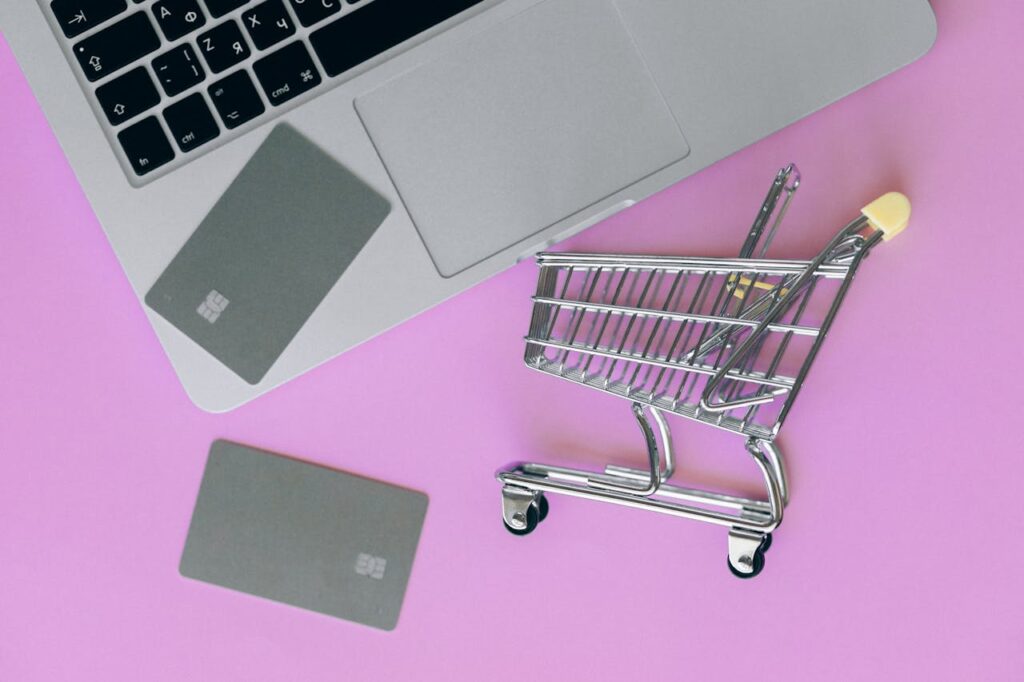You’re scrolling through Instagram when you see it: your friend posting from a luxury resort in Bali, cocktail in hand, captioned “Living my best life! #blessed #wanderlust.” Three minutes later, you’re researching flights to Indonesia, calculating how you could afford a similar trip, even though you were just complaining about your student loan payments yesterday.
Welcome to financial FOMO—the fear of missing out that’s driving spending decisions for millions of people and quietly sabotaging financial goals across America. If you’ve ever made a purchase because of something you saw on social media, you’re not alone: 57% of Americans admit social media has influenced their financial decisions, and 73% say it’s changed how they spend, save, or invest.
The question isn’t whether social media affects your spending—it’s how much it’s costing you and what you can do about it.
The Psychology of Social Media Spending
The Comparison Trap
Social media creates a 24/7 highlight reel of everyone’s best moments, most expensive purchases, and most enviable experiences. Your brain, designed for survival in small communities where social status mattered for resource access, can’t distinguish between your Stone Age social group and your 847 Instagram followers.
The Result: Your subconscious interprets others’ curated content as evidence that you’re falling behind socially and economically.
Dr. Rachel Calogero, Psychology Professor: “Social media creates artificial scarcity and urgency around experiences and products. We see others enjoying things and our brain interprets this as evidence we need those things to be socially accepted.”
“Use habit automation from 9 Life Hacks That Will Save You $200 This Month to curb impulse spending.”
The Instant Gratification Cycle

Traditional Shopping Process:
- Recognize need
- Research options
- Compare prices
- Make deliberate purchase decision
Social Media Shopping Process:
- See appealing product/experience
- Feel immediate desire
- Click purchase link
- Buy before rational thought kicks in
The speed of this cycle eliminates the natural cooling-off period that prevents impulse purchases.
The Influencer Effect
The Numbers:
- 49% of consumers depend on influencer recommendations
- Influencer marketing is a $16.4 billion industry
- Average person sees 4,000-10,000 ads daily (many disguised as content)
The Psychology: Influencers feel like friends sharing recommendations, not advertisers selling products. This perceived authenticity bypasses normal skepticism about marketing messages.
The Real Cost of Financial FOMO

Quantifying the Impact
Recent Survey Results (Empower, 2025):
- 51% of Americans experience financial FOMO from social media
- 57% have made financial decisions based on social media content
- 73% say social media has changed their spending/saving/investing habits
Generation Breakdown:
- Gen Z: 70% experience financial FOMO from social media
- Millennials: 57% experience financial FOMO
- Gen X: 37% experience financial FOMO
- Baby Boomers: 28% experience financial FOMO
Where the Money Goes
Top FOMO Spending Categories:
- Dining out: 21% of FOMO purchases
- Investments: 18% (often risky or trendy)
- Travel: 16% (most expensive category per purchase)
- Events: 15% (concerts, experiences)
- Fashion/Beauty: 14%
- Technology: 10%
- Home/Decor: 6%
Case Study: Sarah’s FOMO Spending
Sarah, 28, marketing coordinator earning $52,000:
- Instagram-inspired restaurant visits: $180/month
- Travel influenced by travel bloggers: $3,600/year
- Fashion purchases from influencer posts: $150/month
- Beauty products from TikTok reviews: $75/month
- Total annual FOMO spending: $8,460
- Percentage of gross income: 16.3%
Sarah’s reflection: “I didn’t realize how much social media was influencing my spending until I added it up. That $8,460 could have been my entire emergency fund.”
The Specific Triggers That Make You Spend
Visual Triggers
Lifestyle Curations:
- Perfectly arranged apartments that make yours look inadequate
- Wardrobes full of trendy clothes that make yours seem outdated
- Exotic travel photos that make your staycation seem boring
Product Placements:
- “Get ready with me” videos featuring multiple products
- Home tours showcasing expensive furniture and decor
- Food content featuring premium ingredients and kitchen gadgets
Psychological Triggers
Exclusivity and Urgency:
- “Limited time offers” for followers
- “Exclusive discount codes” that create false scarcity
- “Last chance” messaging that pressures immediate action
Social Proof:
- “Everyone is buying this” messaging
- High engagement numbers on product posts
- Comments from others saying they “need” featured items
Aspirational Identity:
- Content that suggests products will transform your life
- Before/after comparisons that promise dramatic changes
- Lifestyle promises attached to purchases
Emotional Triggers
FOMO-Inducing Phrases:
- “You only live once”
- “Treat yourself”
- “Invest in experiences”
- “You deserve this”
- “Don’t miss out”
Emotional States That Increase Vulnerability:
- Stress or anxiety (shopping as therapy)
- Boredom (browsing as entertainment)
- Loneliness (purchasing as connection)
- Comparison (buying to “keep up”)
Platform-Specific Spending Triggers
Instagram: The Lifestyle Laboratory

Primary FOMO Categories: Travel, fashion, dining, experiences
Average FOMO purchase influenced by Instagram: $127
Most dangerous features: Stories (temporary urgency), Shopping tags (one-click purchasing)
Case Study: Maria’s Instagram Travel FOMO
- Follows 45 travel influencers
- Books trips 40% more expensive than planned after seeing “similar” content
- Annual overspend due to Instagram travel FOMO: $2,800
TikTok: The Impulse Purchase Engine
Primary FOMO Categories: Beauty, fashion, gadgets, food trends
Average TikTok-influenced purchase: $67
Most dangerous features: “TikTok made me buy it” trend, affiliate links in bio
The Algorithm Effect: TikTok’s algorithm learns what makes you spend and serves similar content
Facebook: The Social Comparison Platform
Primary FOMO Categories: Home improvement, family activities, local experiences
Spending trigger: Friends’ lifestyle updates and life milestones
Hidden cost: Event attendance and gift-giving pressure
YouTube: The Product Review Trap
Primary FOMO Categories: Technology, beauty, home improvement
Dangerous content types: Haul videos, unboxing content, “honest” reviews (often sponsored)
Average influenced purchase: $156
Pinterest: The Aspiration Engine
Primary FOMO Categories: Home decor, wedding planning, fashion
Psychological trap: Creating boards of “dream” items that become shopping lists
Spending pattern: Multiple small purchases to recreate pinned looks
“Manage your digital influences with strategies from Are Debit Cards Dead? Why Young Adults Are Switching to Fintech.”
The Hidden Costs Beyond the Purchase Price
Opportunity Cost
Example: $200/month FOMO spending
- Invested at 7% annually: $138,000 over 30 years
- Emergency fund: $2,400 annual contribution
- Debt payoff: Extra $2,400 annually toward high-interest debt
Psychological Costs
Decision Fatigue: Constant exposure to purchasing decisions drains mental energy
Buyer’s Remorse: 67% of social media-influenced purchases lead to regret
Financial Stress: FOMO spending often leads to budget strain and debt
Relationship Costs
Partnership Strain: Different social media influences can create spending conflicts
Social Pressure: Feeling obligated to maintain appearances becomes expensive
Authenticity Loss: Purchasing based on others’ values rather than your own
The Debt Spiral: When FOMO Becomes Dangerous
The Credit Card Connection
Statistics:
- 34% of FOMO purchases are made with credit cards
- Average credit card debt among frequent social media users: $3,200 higher
- FOMO-driven purchases are 43% more likely to remain unpaid after 60 days
The Buy Now, Pay Later Trap
FOMO + BNPL: Perfect storm for overspending
- 61% of Gen Z uses BNPL for FOMO purchases
- Average BNPL debt among social media-influenced spenders: $1,847
- Default rate on FOMO-driven BNPL purchases: 23% higher
Case Study: Alex’s BNPL Spiral
Alex, 25, used BNPL for multiple Instagram-influenced purchases:
- Designer sneakers: $180 (4 payments of $45)
- Skincare routine: $240 (4 payments of $60)
- Workout equipment: $320 (4 payments of $80)
- Travel accessories: $160 (4 payments of $40)
- Total BNPL obligations: $225/month for 6 weeks
- Result: Missed payments, fees, damaged credit
Building FOMO Resistance: Practical Strategies

Immediate Action Steps
1. The 24-Hour Rule Plus
- Wait 24 hours for purchases under $50
- Wait 48 hours for purchases $50-200
- Wait 1 week for purchases over $200
- Ask: “Would I want this if I hadn’t seen it on social media?”
2. Unfollow and Mute
- Unfollow accounts that consistently trigger spending urges
- Mute keywords related to your weakness categories
- Use “See Fewer Posts Like This” options
- Follow financial education accounts instead
3. Remove Shopping Temptation
- Delete shopping apps from your phone
- Log out of stored payment information
- Remove credit cards from browser auto-fill
- Unsubscribe from promotional emails
Advanced Psychological Strategies
1. The True Cost Calculator
Before any FOMO purchase, calculate:
- Hours of work needed to earn that money (after taxes)
- What else that money could accomplish
- Whether this aligns with your stated financial goals
2. The Values Alignment Check
Ask yourself:
- Does this purchase reflect my personal values?
- Am I buying this because I want it or because someone else has it?
- How will I feel about this purchase in 6 months?
3. The Opportunity Cost Visualization
For every potential FOMO purchase, visualize what else that money could do:
- Emergency fund contribution
- Debt payment
- Investment growth
- Experience you actually want
Social Media Behavior Modification
1. Intentional Consumption
- Set specific times for social media use
- Use app timers to limit daily usage
- Follow accounts that align with your financial goals
- Engage with educational content rather than shopping content
2. Create Counter-Narratives
- Follow debt payoff accounts for motivation
- Engage with minimalism and intentional living content
- Read about the psychology of marketing and influence
- Connect with others working toward similar financial goals
3. Curate Your Feed
Replace FOMO-inducing content with:
- Financial education accounts
- Minimalism and intentional living content
- Hobby accounts focused on free/low-cost activities
- Local community and volunteer opportunities
Creating Your Anti-FOMO Financial Plan
Step 1: FOMO Spending Audit (Week 1)
Track every purchase for one week and identify:
- Which purchases were influenced by social media
- Which platforms triggered the most spending
- What emotional state you were in when spending
- Whether you regret any purchases
Step 2: Environmental Design (Week 2)
Modify your environment to reduce FOMO triggers:
- Curate social media feeds
- Remove shopping apps and stored payment info
- Set up app usage limits
- Create positive financial reminders
Step 3: Alternative Satisfaction (Week 3)
Find non-spending ways to satisfy FOMO feelings:
- Window shopping without purchasing
- Creating wish lists but not buying immediately
- Trying free versions of desired experiences
- Connecting with friends in low-cost ways
Step 4: Values Clarification (Week 4)
Clearly define:
- Your actual financial goals
- What brings you genuine satisfaction
- How you want to allocate limited resources
- What kind of life you’re working toward
“Strengthen your savings habit alongside FOMO resistance using The Psychology of Saving.”
The FOMO-Free Lifestyle: Real Success Stories
Case Study 1: Jennifer’s Instagram Detox
Before: $350/month FOMO spending, mostly travel and dining
Strategy: Unfollowed all travel influencers, limited Instagram to 30 minutes daily
After: $80/month discretionary spending on truly desired items
Result: $3,240 annual savings, reduced financial stress
Jennifer’s insight: “I realized I was trying to live someone else’s life instead of appreciating my own. Now I travel when and where I actually want to go, not because it looks good on Instagram.”
Case Study 2: Marcus’s TikTok Transformation
Before: $180/month on TikTok-influenced purchases (gadgets, fashion, food trends)
Strategy: Replaced TikTok with educational podcasts, followed financial content creators
After: $40/month on carefully considered purchases
Result: $1,680 annual savings, built emergency fund
Marcus’s reflection: “TikTok was making me feel like I needed everything everyone else had. Switching to financial education content made me realize how much money I was wasting.”
Case Study 3: Sarah and Mike’s Couple Strategy
Before: Combined $420/month FOMO spending creating budget conflicts
Strategy: Weekly “FOMO check-ins” to discuss triggered purchases, shared financial goals
After: $120/month on agreed-upon discretionary spending
Result: $3,600 annual savings, eliminated money-related arguments
Their approach: “We realized we were both being influenced by different social media content and spending competitively. Having honest conversations about FOMO helped us get on the same page.”
Advanced Anti-FOMO Techniques
The Gratitude Practice
Daily habit: Each morning, list 3 things you already own that you’re grateful for
Purpose: Shifts focus from scarcity to abundance mindset
Research: Gratitude practices reduce impulse spending by 12-23%
The Delayed Gratification Reward System
Method: For every FOMO purchase you avoid, put that money in a separate account
Reward: Use accumulated funds for a truly meaningful purchase or experience
Psychology: Creates positive reinforcement for avoiding FOMO spending
The Social Media Fast
Approach: Take 7-30 days completely off social media
Benefits: Reset spending habits, reduce comparison triggers, increase life satisfaction
Reentry: Return with intentional following and engagement strategies
The Accountability Partner System
Structure: Partner with someone who shares similar financial goals
Process: Weekly check-ins about FOMO triggers and spending decisions
Support: Encouragement to make values-aligned choices instead of comparison-driven ones
Long-Term Financial Benefits of FOMO Resistance

Immediate Benefits (Month 1-3)
- Reduced impulse purchases
- Lower credit card balances
- Decreased financial stress
- More intentional spending
Medium-Term Benefits (Month 3-12)
- Emergency fund building
- Debt reduction
- Better alignment between spending and values
- Increased savings rate
Long-Term Benefits (Year 1+)
- Substantial wealth building
- Financial independence acceleration
- Reduced dependence on external validation
- Greater life satisfaction and authenticity
Quantified Impact Example
Average FOMO spender: $250/month
Anti-FOMO spender: $80/month
Monthly savings: $170
Annual savings: $2,040
30-year investment value (7% return): $208,000+
Beyond money: Improved mental health, stronger relationships, clearer personal values
Your FOMO-Free Action Plan
This Week: Awareness Building
- Track all purchases and note social media influences
- Calculate your monthly FOMO spending
- Identify your most dangerous platforms and triggers
Next Week: Environmental Changes
- Curate social media feeds to remove spending triggers
- Set up app usage limits and remove shopping apps
- Create positive financial reminders in your environment
Month 1: Habit Formation
- Practice the 24-48-hour rule for all non-essential purchases
- Implement weekly FOMO spending check-ins
- Find alternative activities to replace mindless scrolling
Month 3: System Optimization
- Evaluate which strategies work best for your situation
- Refine your social media consumption habits
- Redirect FOMO savings toward meaningful financial goals
The Bottom Line: Your Money, Your Choices
Financial FOMO isn’t a personal failing—it’s a predictable response to sophisticated psychological manipulation designed to make you spend money. Recognizing this is the first step toward taking back control.
The goal isn’t to eliminate all social media or never make discretionary purchases. The goal is to make spending decisions based on your values, goals, and genuine desires rather than artificial scarcity and social comparison.
Every dollar you don’t spend due to FOMO is a dollar that can work toward your actual financial goals—whether that’s debt freedom, homeownership, financial independence, or simply the peace of mind that comes with intentional money management.
Your financial future is too important to be decided by an algorithm designed to make you feel inadequate. Take back control, spend intentionally, and build the life you actually want—not the one social media tells you to want.
How has social media influenced your spending decisions? What strategies have you found helpful for resisting FOMO purchases? Share your experiences and tips in the comments below.
Related Articles
- 9 Life Hacks That Will Save You $200 This Month
- Why Cutting Subscriptions May Be Better Than Cutting Lattes
- 7 Hidden Bank Fees That Are Quietly Draining Your Savings
- How I Saved $10,000 in a Year Without Cutting Out Coffee
Resources Links
- American Psychological Association: “Social Media and Mental Health”
- Journal of Consumer Research: “Impact of Social Media on Spending”
- Nielsen: “Global Consumer Insights Survey”





